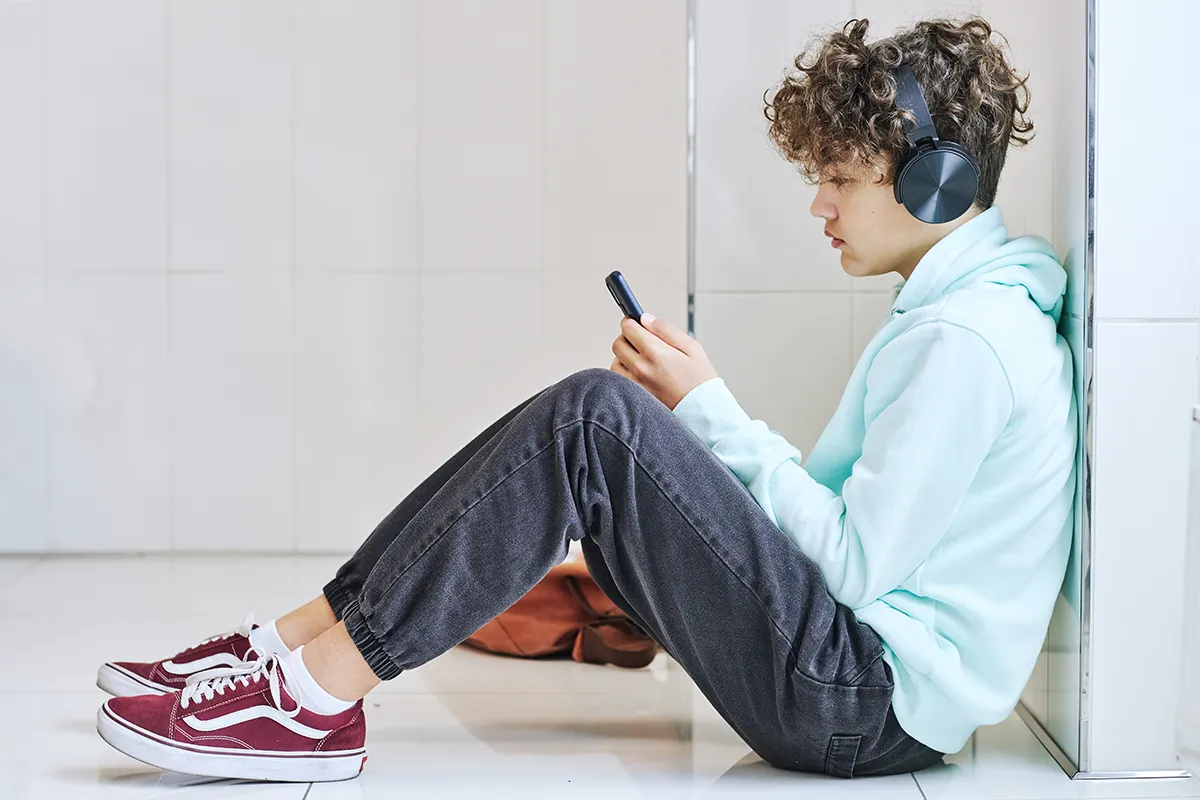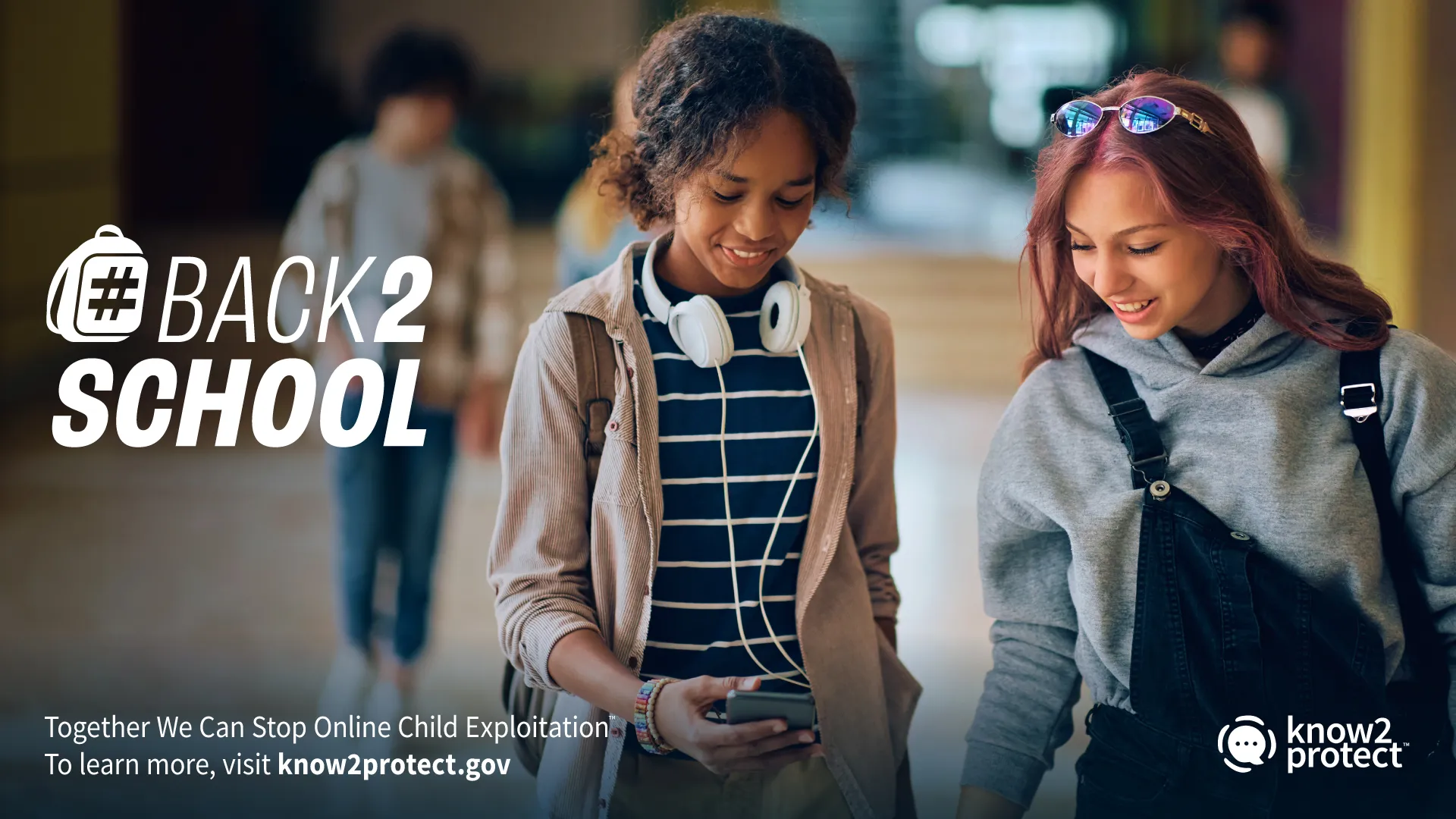Healthcare professionals, mental health professionals, and social workers understand the impact of child sexual abuse on their patients.
In today’s technologically-dependent world, the children and teens in your care face a rising and insidious threat from predators using technology to gain access to and exploit children online. Online threats to your patients' safety and well-being bring a unique challenge to healthcare workers who want to prevent patients from becoming victims of online sexual exploitation and abuse (CSEA).
Here’s what healthcare professionals need to know about online child sexual exploitation and abuse, as well as their role in identifying, reporting, and treating it in a healthcare setting.
What Is Online Child Sexual Exploitation and Abuse?
The U.S. Department of Homeland Security (DHS), whose mission is to investigate and combat crimes of exploitation, defines online CSEA as a horrific crime that targets some of the most vulnerable people in our communities — our children and teens. Online CSEA includes a broad range of criminal acts that involve victimizing a minor for sexual gratification or some other personal or financial gain.
Also known as technology-assisted child sexual abuse, online CSEA is a term describing the use of technology in sexual abuse.
Online CSEA includes a range of abusive and harmful practices, such as:
- Production, possession, or sharing of child sexual abuse materials (CSAM), including “self-produced” sexual content involving minors.
- Live streaming of sexual content or sexual abuse involving minors.
- Presenting pornographic or sexually explicit materials to minors.
How Prevalent is Online CSEA?
In the last decade, online CSEA has increased exponentially. Because this crime takes place online, it occurs all over the world and is a global epidemic.
The National Center for Missing and Exploited Children received 1 million reports of online CSAM in 2014. That number jumped to 36 million reports received in 2023.
The volume of incoming reports to DHS has increased by more than 20% over the past three years. The number of urgent, imminent reports involving a child at risk of imminent harm has grown by more than 140% over the same timeframe—almost 64,000 such reports were received last year alone. The scourge covers the world, from India to Pakistan, the Philippines to Australia, Europe, and here in the United States.
Increased technology use among children and teens has allowed these technology-assisted crimes to flourish.
Children and teens are spending an increasing amount of time online. More than half of US teens spend an average of 7 hours and 22 minutes of screen time daily. Many report using some social media platforms, such as YouTube and Instagram, “almost constantly.”
A 2024 report on Children’s Wellbeing in a Digital World from Internet Matters revealed that two-thirds (67%) of children report harmful experiences online, including a 5% increase in the number of strangers trying to contact or send them messages.
This increase is even steeper for girls aged 15 and 16; 48% reported contact with strangers online this year compared to 29% last year.
How AI is Impacting Online CSEA
The rise in new artificial intelligence (AI) technology has created exponentially more ways for predators to generate and disseminate child sexual abuse materials. Offenders can use AI to take an image of a child and manipulate it to make the child appear nude or engaged in a sexual act. AI can also be used to create chatbots that simulate human conversation and are programmed to groom children to be sexually exploited and abused.
Online CSEA images created by AI are illegal and just as detrimental to victims as live pictures. AI-generated CSEA or “deepfakes” can victimize children and cause severe mental anguish through cyberbullying and sextortion. As AI technology rapidly improves, the risk of deepfakes increases.
The Impact of Technology-Assisted Child Sexual Exploitation and Abuse
Research regarding the impact of technology-assisted online CSEA is still in its infancy. However, evidence suggests that the harmful effects of CSEA are equivalent to contact abuse.
Youth who experience online grooming leading to child sexual abuse (online or offline) experience psychological difficulties in the aftermath, including:
- Depression
- Aggression
- Self-harm
- Revictimization
- Negative responses from peers, family members, and schools
- Self-blame
- PTSD
Children and teens who have been abused through CSAM production appear to experience additional problems to those associated with contact abuse.
The most significant psychological impacts associated with online sexual abuse include:
- Anxiety about whether the victim might be seen as a willing participant in the abuse
- Fear of being recognized if someone they knew saw the image
- Guilt and shame and an ongoing sense of vulnerability
Which Youth Are at Risk of Online CSEA?
Online CSEA can happen to anyone. However, studies have identified some of the characteristics of youth at risk of online CSEA and online grooming.
- Research has found the risk of online sexual solicitation by adults is greater for adolescents aged 13–17 years than for children under 12.
- Girls are about three times more likely than boys to receive online sexual solicitations.
- The risk of receiving unwanted sexual contact online is higher for adolescents questioning their sexuality, experiencing psychological difficulties (depression), and experiencing other difficulties — such as parental conflict — offline.
- Low parental involvement or monitoring, poor parent-child communication, engagement in risky online behaviors, and greater internet use have also been linked to increased risk of online sexual grooming.
Some research also indicates that youth who would not typically be considered vulnerable to offline child sexual abuse may be vulnerable to online grooming, abuse, or exploitation, including sextortion, a trend that is disproportionately impacting boys aged 14-17 years of age.
The Role of Healthcare Professionals in Online CSEA
Healthcare professionals are often the first line of defense when it comes to contact abuse for children. However, identifying and treating online CSEA is much different than contact abuse.
Research has shown that healthcare practitioners (HCPs) feel that talking about youth online activities and their impact on mental health is important, yet they have varied levels of confidence in their ability to identify and respond to matters of online CSEA.
Identifying Online CSEA in a Healthcare Setting
Assessments can help HCPs identify possible instances of online CSEA in a healthcare setting. A routine question set about technology use, associated risks, and technology-assisted /online CSEA experience in clinical intake assessment of children and adolescents can systematically evaluate the potential involvement of technology or online activities in cases where online CSEA is suspected.
Youth often feel judged or misunderstood when talking about their online activities. This can stop them from disclosing any online difficulties for fear of judgment. HCPs can help encourage openness by approaching online CSEA assessments with curiosity and an understanding of how technology and online activities can be used to facilitate abuse or exploitation.
How Healthcare Professionals Can Report Online CSEA
DHS Homeland Security Investigations Know2Protect initiative is a national public awareness campaign that educates and empowers youth and trusted adults with online CSEA education, prevention, and intervention strategies.
Know2Protect offers the following methods for reporting suspected online CSEA:
- Contact your local, state, or tribal law enforcement officials directly. Call 911 in an emergency.
- Call the Know2Protect Tipline at 833-591-KNOW (5669). All information received via the Tipline will be reviewed by appropriate personnel and referred to Homeland Security Investigations field offices for potential investigation.
- Submit a CyberTipline report with the National Center for Missing and Exploited Children.
Reporting Suspected Online CSEA
Healthcare professionals are often mandated reporters. If you are required to make a report of suspected child sexual abuse (online or offline) in your state, you may have additional reporting requirements if you suspect a patient is the victim of online CSEA.
Mandated reporter training for medical professionals can help you learn more about your reporting requirements and the signs of online CSEA.
Treatment and Recovery of Online CSEA
Treatment and recovery of young people exposed to online CSEA is an emerging field affecting HCPs, social workers, and other mental health professionals.
Victims of online CSEA are usually subjected to more than one form of abuse, such as a form of sexual abuse and the resulting digital materials. Being exposed to more than one form of abuse can create challenges for victims; it increases the likelihood of negative long-term effects up into adulthood. The digital component can add feelings of powerlessness and helplessness by victims, as online material can be recirculated and create revictimization.
Learn More About Online Child Sexual Abuse and Exploitation
For healthcare professionals, mental health workers, and social workers, it’s crucial to understand the threat of technology-assisted child sexual abuse has never been bigger. Learn more about the threats and dangers children and teens face online and find resources to help you as a trusted professional working with children at Know2Protect.


